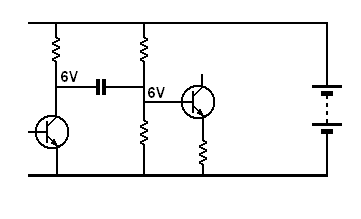Manchested
Member level 5
is there any purpose for a capcitor connected between the postive voltage rail(+5V) and negative voltage rail (-5V)?
Follow along with the video below to see how to install our site as a web app on your home screen.
Note: This feature may not be available in some browsers.
The pins should not necessarily be +5v and GND, it can be +ve and -ve supply also.i thought decoupling capacitors are connected between power rail and ground?
... used to protect DC Devices from noise or ripples.
Firstly, the first post said "a capcitor (sic) connected between the postive voltage rail ... and negative voltage rail ..."I think if a capacitor has equal potential on both terminals it will not do anything ...

Why do you think that?... one terminal of (a) capacitor must be at ground potential in order charge.
... and, when they are present, between negative rails and "ground".(A) decoupling capacitor is connected between the positive rails and ground ...